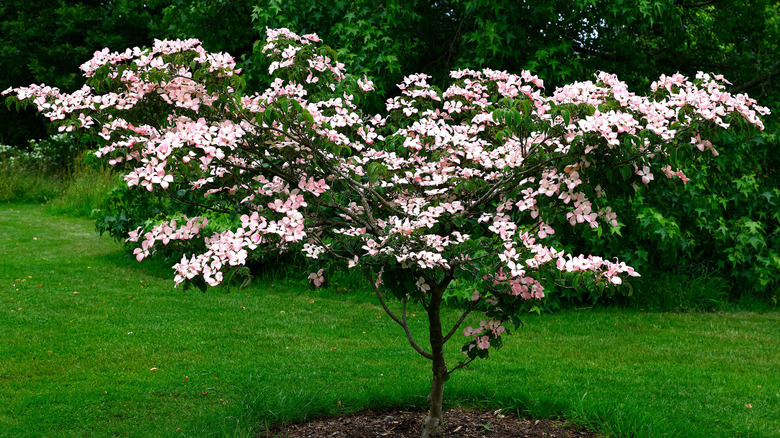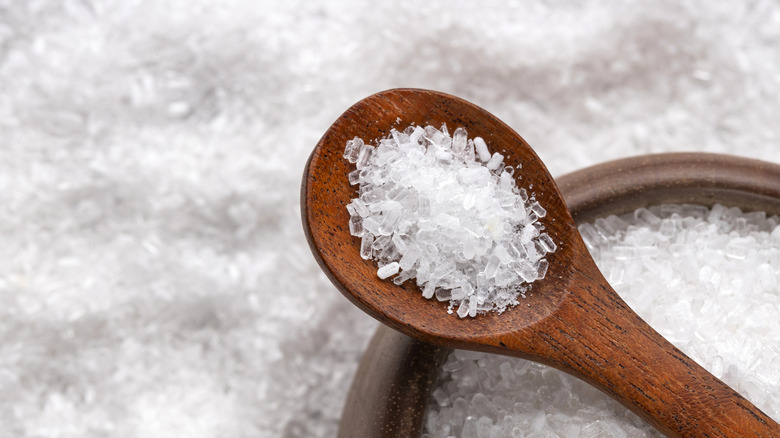Is Epsom Salt The Secret To Growing A Thriving Dogwood Tree?
Nutrient deficiencies are among the many reasons your flowering dogwood (Cornus florida) may not be thriving. Of the 17 nutrients your trees need, six are considered macronutrients because of the volume the plant uses. Among them is magnesium, an element found in Epsom salts, a product you can find at the pharmacy or your local big box store. Epsom salts have long been touted as an environmentally-friendly miracle cure for magnesium-poor soil. Using Epsom salt as an amendment for your dogwood trees' soil isn't as simple as sprinkling a handful around their base from time to time, but that can be a useful practice in the right circumstances.
Trees need magnesium for chlorophyll production. Chlorophyll is the green pigment necessary for photosynthesis, the process by which plants turn sunlight into energy. Without it, trees suffer from chlorosis and the leaves lose their color. While you can make a DIY test to check the health of your soil, the only way to determine a magnesium deficiency is to have your soil tested at your local agricultural extension office. If the test shows that your soil lacks the right amount of magnesium, you'll need to address the issue to have healthy dogwood trees.
How to boost magnesium with Epsom salt
A basic solution for magnesium deficiency is to apply ½ cup of Epsom salt per 100 square feet of soil. Water thoroughly to help it soak into the ground. You can also apply Epsom salts through a drip system or as a side dressing. Installing an individual drip irrigation system, consisting of a series of pipes that slowly allow water to seep into the ground, is considerably more efficient than a sprinkler system and creates less runoff. Remember to run clear water through the drip system after you've used Epsom salt to prevent mineral buildup on the emitters. For a side dressing, apply about one tablespoon of Epsom salt at the base of the tree.
There are a few myths about using Epsom salt that have been debunked. Excess Epsom salt can build up in the soil, contrary to popular belief. There is no current scholarly proof that Epsom salt is the key to germinating seeds or that it will discourage pests. Providing plants with excessive amounts of Epsom salt will not make them bigger or bushier beyond the benefit magnesium provides in curing and preventing chlorosis. For the same reason, claims that magnesium applied in the form of Epsom salt will increase flowering, boost chlorophyll production, or improve nitrogen uptake are unfounded.
Keep in mind that adding too much Epsom salt to the soil around your dogwood can harm the tree rather than help it. Excessive amounts will interfere with the tree's ability to take up calcium, another macronutrient. Don't ever spray the leaves with an Epsom salt solution, as it may cause leaf scorch.

